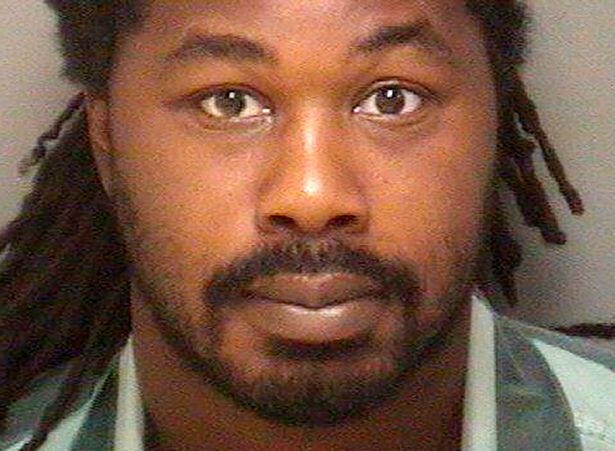Jesse Matthew, Jr.: The Back to School Killer

Oct. 17, 2009, Fairfax, Virginia: 20-year-old Virginia Tech student Morgan Harrington is getting ready to see her favorite band, Metallica, perform at the John Paul Jones Arena that evening as part of their World Magnetic tour.
Morgan is visiting at her parents’ house in Fairfax, about 45 minutes away from Charlottesville, where she lives with her roommates. Here at her parents’, she gets dressed for the concert: Pantera T-shirt, miniskirt, leggings, and boots, all black.
Later in the afternoon, she heads back into Charlottesville to pick up her roommates and friends to drive them all to the concert.
The friends pile into Morgan’s car and arrive at the arena around 7 p.m. About an hour later, as one of the opening bands is playing, she tells her friends she needs to use the bathroom and leaves.
Her friends don’t think much of it until she’s been gone for nearly half an hour. A little after 8:45 p.m., one of her friends calls Morgan. Morgan tells her friend that she ended up outside of the arena, and security won’t let her back in. The friend realizes that she has Morgan’s car keys, but Morgan tells her she’ll find a ride home.
After the concert, her friends try to call her again, but her phone seems to be shut off. They search around the arena and parking area, but can’t find her.
After searching a while, they go home. When her roommates see that Morgan isn’t there, they call the University of Virginia police to report her missing.
The UVA police begin their search where she was last seen: at the John Paul Jones Arena.
The next day, as Morgan’s dad is waiting for her to return, he gets a call from the UVA police: they have found Morgan’s purse. At first, her dad just thinks this is odd, that maybe Morgan dropped her purse accidentally. But Morgan’s mom knows something is very wrong.
As the search fans out, they find Morgan’s cell phone in an overflow parking lot nearby. The battery has been removed.
At this point, Morgan’s disappearance looks like it could involve foul play, so the Virginia State Police take over the investigation. They go on local media asking for any witnesses to come forward, and over 100 people do so.
Through these witness interviews, the police are able to reconstruct some of what happened after Morgan left her seat that evening.
Arena security guards remember seeing the pretty blonde in the Pantera shirt that night. They say they warned her that if she left, she could not come back in. But they say Morgan insisted, so they let her walk out.
Other witnesses describe seeing her in the parking lot afterwards — and some of them describe her as acting as though she were really drunk and erratic. This despite the fact that her friends say she was not intoxicated when they last saw her.
Some witnesses saw her with a group of three or four men. One woman says she saw a woman matching Morgan’s description on the Copely Road bridge, alone and hitchhiking, at around 9:30 p.m.
Another woman claims to have seen her with some men on campus at around 3:45 a.m. the next morning.
But that is the last witness account police can find. They look through hundreds of hours of surveillance footage from every surrounding camera, but she doesn’t appear anywhere.
At the same time, massive searches are conducted of the entire area, including the tunnel system beneath the campus of UVA. Locals and students join the police and search dogs on the ground, and the police helicopter searches from the sky.
A $100,000 reward is raised, and Metallica chips in another $50,000. James Hetfield, the band’s lead singer and rhythm guitarist, releases a video on the band’s website asking for anyone with information to come forward.
Then, on Nov. 11, students find Morgan’s shirt in some bushes near an apartment building near campus. The shirt is laid out flat on the bush with the letters facing up, as though whoever left it there wanted it to be found.
The long blond hairs on the shirt are identified through mDNA as belonging to Morgan. There is also other DNA on the shirt, which the police send to a lab for testing.
But aside from the shirt, the searches and investigations turn up nothing. After eight weeks, police finally call it off.
Morgan’s parents try to keep her case in the public eye as the cold Virginia winter sets in. But for months, there are no new leads.
Then, in January 2010, a farmer in nearby Ablemarle County is riding his tractor, checking on a remote area of his 700 acres, when he sees what he at first thinks is a dead deer. But once he comes closer, he sees a human skull. He immediately calls the police.
The skeletonized remains are that of a woman, and, using dental comparisons, is identified as Morgan. Her skeleton shows evidence of trauma, including a broken nose and other broken bones. Since she is so decomposed, a cause of death can’t be determined, but the manner of death is clear: homicide.
Based on where she is found, as well as where her shirt was found, investigators believe the killer is familiar with the area. And they believe he may have done something like this before.
When the results come back from the DNA found on her shirt, it is a match for DNA collected in another attack in 2005, in Fairfax. A young woman was walking home from the grocery store when she was snatched up from behind and dragged out of sight. Her abductor started trying to rape her, but was interrupted by some passersby and fled.
The victim was able to give police a description of her attacker — a large black man — and they created a sketch from her description.
But the DNA did not match any known offenders in CODIS. What at first seemed like a promising lead has turned into yet another dead end.
Morgan Harrington’s case slowly goes cold.
Sept. 13, 2014, 1:20 a.m., Charlottesville, Virginia: 18-year-old Hannah Graham, a sophomore at the University of Virginia, texts a friend that she is lost. She had just attended an off-campus party and is planning on going to another, but apparently can’t find the place.
When she doesn’t show up to class and her friends and family can’t reach her on her cell phone, they report her missing.
Police immediately begin looking for any surveillance footage that might show where she was and who she was with. Unlike with Morgan Harrington five years earlier, Hannah is seen in several stores’ footage in the Downtown Mall. In one area, she is seen walking by the camera. Soon, a large black man with long braids or dreadlocks walks by in the opposite direction — then turns around and begins following her.
Subsequent footage shows the man following her, then walking with her. She is then seen by witnesses at a restaurant with the man, who is buying her drinks (even though she is below the legal drinking age) and putting his arm around her waist.
Later, witnesses say they saw Hannah near an orange 1998 Chrysler Sebring, telling the driver she was not going to get into the car.
Because he is captured on so much footage and seen by so many witnesses, police are able to identify him as 32-year-old Jesse Matthew, Jr.
Jesse was not unknown to police. Over an 11-month period between 2002 and 2003, he had been investigated for allegations of rape while he was a student at Liberty University in Lynchburg, then at Christopher Newport University in Newport News. Neither case was ever prosecuted, and Jesse simply left the school after each incident.
Police obtain a warrant to search his apartment and the cab he was driving that night — an orange 1998 Chrysler Sebring. In his cab, they find DNA evidence, which will later be identified as Hannah’s.
However, at this time, police don’t have enough evidence to charge him. Jesse voluntarily comes to the police station to be interviewed, but once the interview is over, he speeds out of the police station parking lot, leading officers on a high-speed chase before escaping.
Just days later, a woman on the beach at Galveston, Texas, recognizes Jesse from news reports and calls police. Jesse is immediately arrested and extradited back to Virginia.
Jesse refuses to admit his guilt or tell police where Hannah’s body is. It isn’t until a month after her disappearance that her remains are found in a creekbed behind an abandoned house in Ablemarle County, just five miles from where Morgan’s remains were found. Like Morgan, her body is too decomposed to determine a cause of death, but her manner of death is ruled as homicide.
In October 2014, Jesse Matthew was charged with attempted murder, object sexual penetration, and abduction with intent to defile for his 2005 attack in Fairfax. He originally pled not guilty, but when he came to trial in June 2015, he entered an Alford plea, a controversial plea meaning he still maintains his innocence, but recognizes that the prosecution has enough evidence to convict him anyway.
He was sentenced to three life terms.
At the same time, he was facing two counts each of abduction and first-degree murder for Morgan and Hannah. In March 2016, he pled guilty to all charges and was sentenced to an additional four life terms.
He had served only three years of his sentence when, in May 2019, Jesse revealed that he had been diagnosed with stage four colon cancer. In December of 2020, he was transferred from Sussex I State prison to a secure unit within VCU Hospital in Richmond.
After her murder, Morgan’s family funded a scholarship at Virginia Tech as well as a school in Africa in her honor. They also funded a non-profit named Save the Next Girl.
Hannah’s family, friends, and the University of Virginia funded several initiatives in her honor, including scholarships and a memorial softball tournament in her name.
